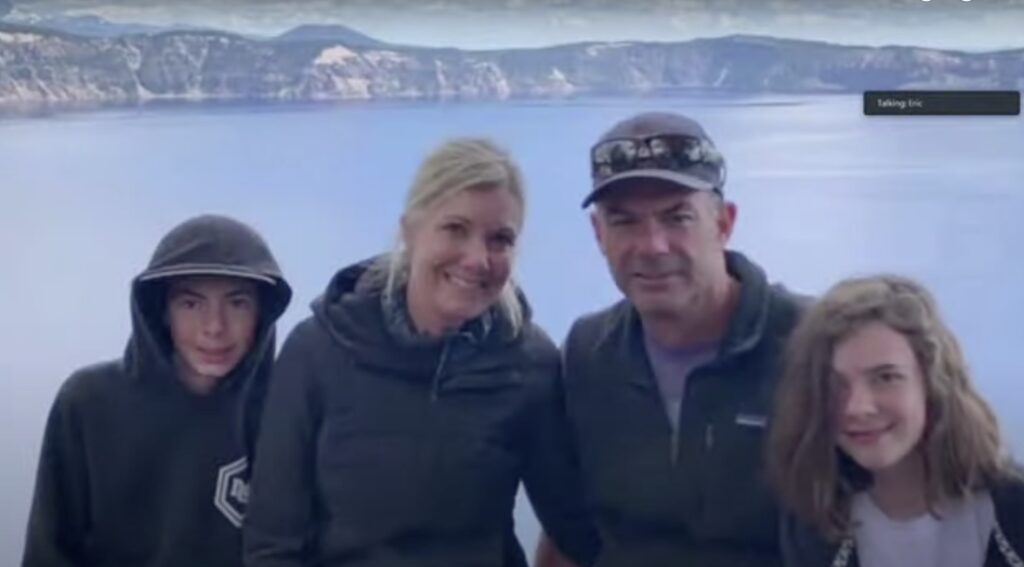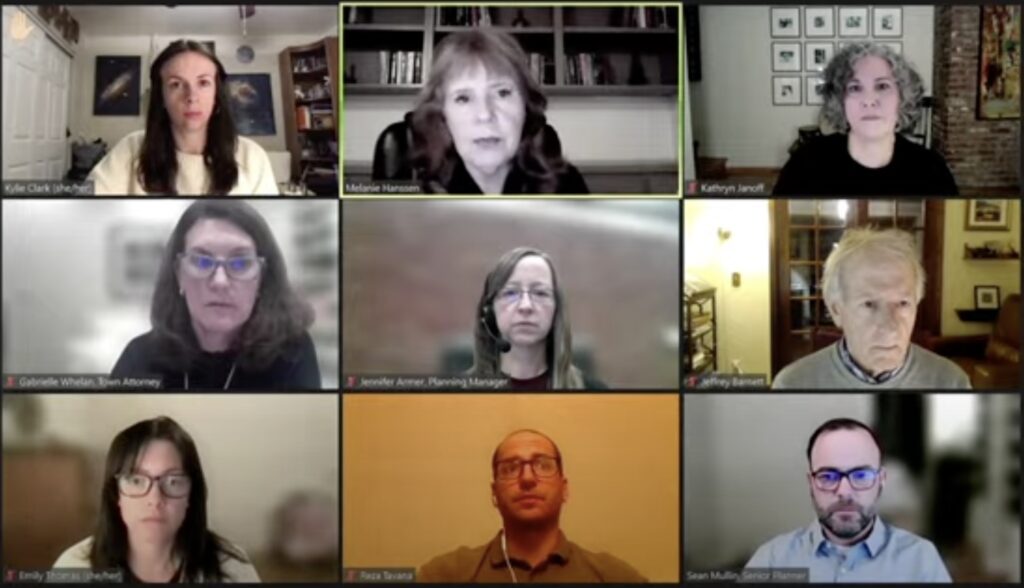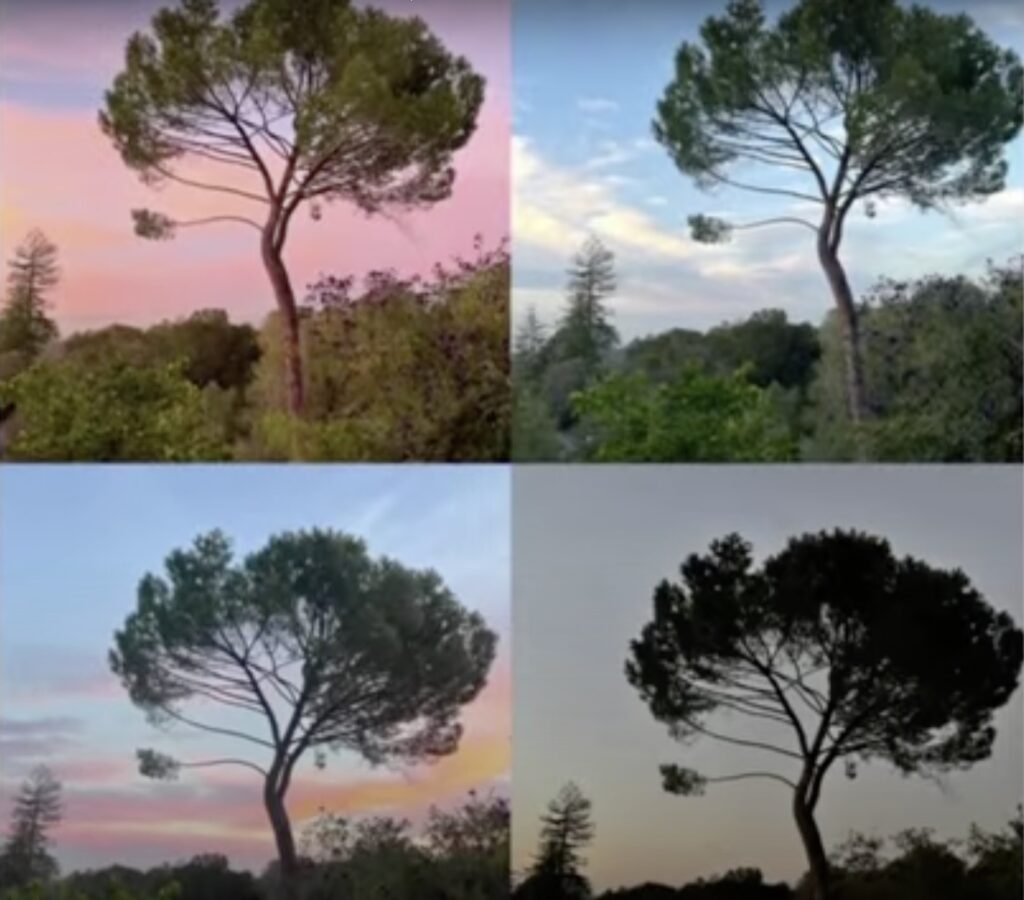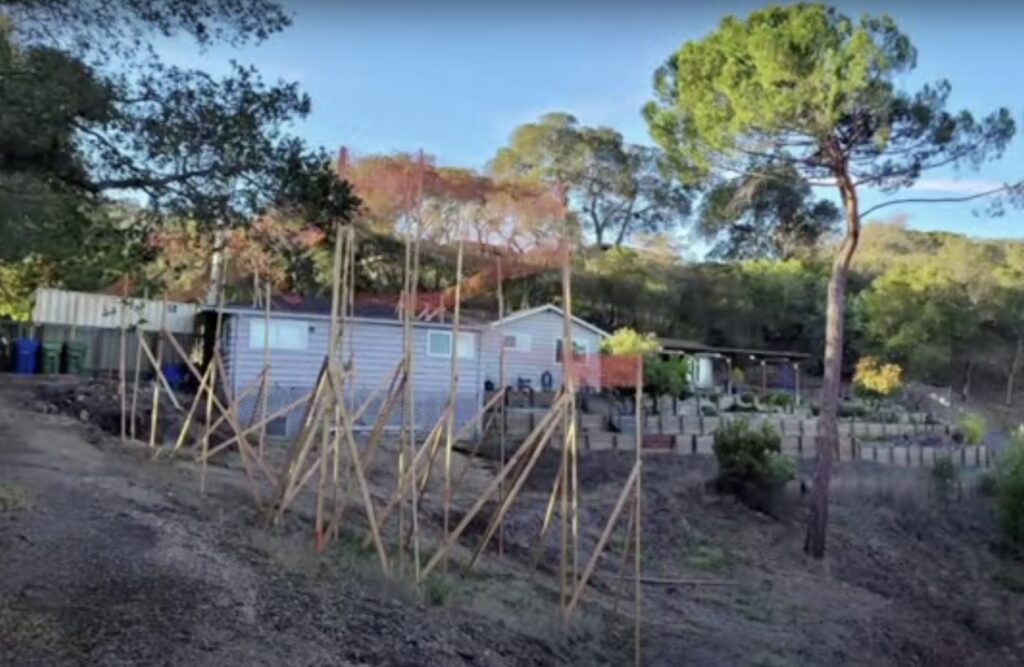A homeowner who sought an exception to new fire-safe rules recently rolled out by the State won over Planning Commissioners and was granted development approval.
Despite Santa Clara County Fire Department representatives appearing in the special Zoom meeting on Nov. 21 to argue against allowing the Wade family to move forward with their project at 17121 Crescent Drive, in Los Gatos’ hills, the town officials went with the staff recommendation for an exception.
“It’s been a long, stressful 17 months of uncertainty,” applicant Eric Wade said. “As a resident of Los Gatos and Monte Sereno for almost 50 years, and remodeling homes here for almost 30, my wife Lee Ann and I would choose no other town to raise our family.”
He’d been trying to get the paperwork in order for a new single-family residence and site improvements requiring a grading permit in the HR-1 zone, he explained.
They’ve been attempting to demolish half of the existing residence—which they characterized as outdated, and more of a fire hazard than their new designs—and to move more than 50 cubic yards of material.
Their proposal for their 41,207-square-foot property had been found to comply with the Hillside Specific Plan and fit in with the Town’s objective standards.
But the Wade family were blocked by County fire officials’ interpretation of an updated State law.
The major sticking point was with the dead-end road rules.

Commissioner Kathryn Janoff asked County officials about this aspect of so-called “4290” law—referring to a set of “Hazardous Fire Areas” guidelines.
“The question that remains for me has to do with the dead-end requirement,” she said. “I understand the importance of 4290—and appreciate the detail that it’s asking for, for purposes of access and ingress and egress…obviously we’re not asking people to run for their lives on foot…and I understand how it makes sense to apply these standards to existing as well as new roads. But I’m having trouble understanding how the length of the dead-end road could be applied fairly, when it’s an existing road.”
Janoff said she can point to many dead-end roads in Los Gatos—including her own—that are longer than the length County officials had outlined as a minimum.
“Help me understand how a homeowner could possibly overcome the issue of the dead-end road,” she said. “I understand all the others, but how could the dead-end road be the final sticking point that fire can’t get past in this circumstance?”
Santa Clara County Assistant Fire Marshall Brad Fox admitted it was a challenging subject.
“I wish I had a straightforward answer for you,” he said. “The reality is, in many cases it can’t be overcome, due to the conditions of the existing road and its location—and if there is a possibility for secondary access.”
The purpose of the regulation is to prevent residents from getting trapped on a long, windy dead-end route during a wildfire, Fox explained.
“If the fire was coming up the road they have no other way to escape,” he said. “So that’s why the State makes that regulation—to limit the distance that you have a dead-end road in these Very High Fire Hazard Severity Zones.”

Janoff said that would make sense if a new road was being proposed.
“I’m having a really hard time understanding what a homeowner does when the road is longer than this 4290 prescribes for various acreages,” she said. “It seems to me that it’s what I call an overly-constrained problem. There is no solution. And no solution in this kind of circumstance doesn’t seem to be where we want to go.”
Santa Clara County Deputy Chief of Fire Prevention Hector Estrada noted the County’s been working with the homeowner for quite some time to resolve this issue.
“This is an example of one of those situations where the 4290 standard says something very explicit,” he said. “If we’re talking about entrapment and we’re talking about the topography, the key feature here is the Very High Fire Severity Zone rating that pulls us into this 4290 standard. So, with that, there are fewer options that we have.”
Estrada said he went over the Wade project three or four times.
“We visited the site, and we even tried walking the hill,” he said, noting they looked at another possible access—but it turned out to be even worse. “We really do try to exhaust every opportunity. We try to use whatever we’ve seen in the past, the creativity that we muster. And we do try to partner.”
In fact, they’d successfully worked through all the other issues that had emerged (besides the dead-end road), he added.

Public commenters spoke both for and against the project.
Commissioner Kylie Clark said the new home—built to current codes—would be more fire-safe, but agreed this doesn’t necessarily improve things if people had to escape in the event of a wildfire.
“What I don’t understand is, there’s already a single-family home there, and there will just be a different single-family home there,” she said. “It feels like, because they’re doing this, it’s kind of come up as a problem. But, as far as I can tell, it’s not actually changing the need for evacuation or anything.”
Commissioner Emily Thomas made a motion to approve the exception (along with some late-breaking proposed conditions for approval). It was seconded by Commissioner Kylie Clark and approved unanimously.











